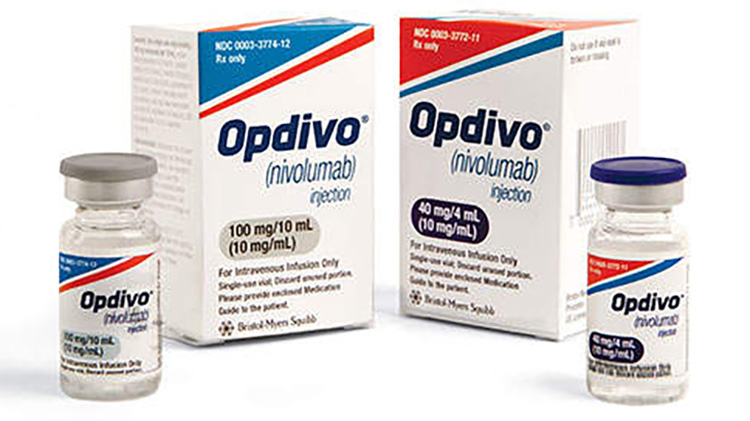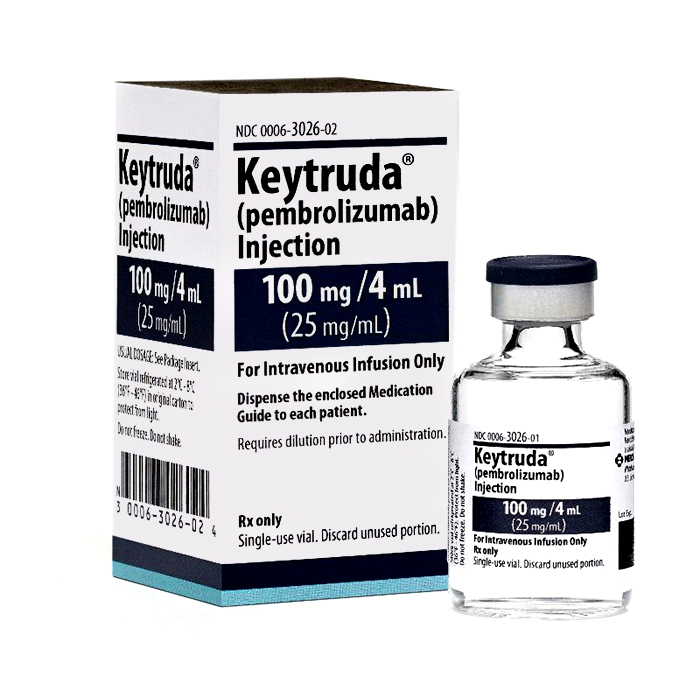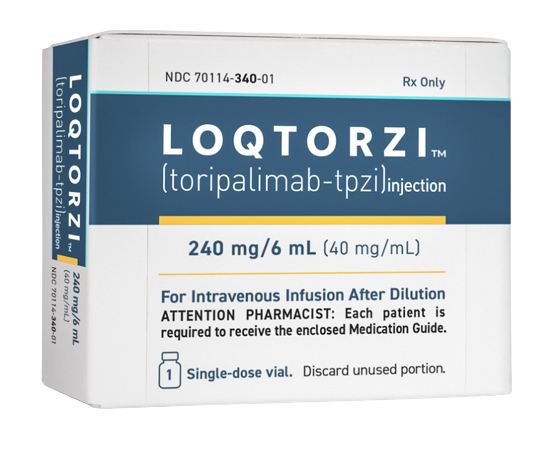New Head and Neck Cancer treatments 2024
New Head and Neck Cancer Treatments 2024
Head and neck cancer refers to a group of biologically similar cancers that start in the tissues and organs of the head and neck region, which include the oral cavity, larynx (voice box), pharynx (throat), paranasal sinuses and nasal cavity, and salivary glands. These cancers are typically categorized by the area in which they begin and the type of cells they involve, with the majority being squamous cell carcinomas. Risk factors for developing head and neck cancer include tobacco use, heavy alcohol consumption, and infection with human papillomavirus (HPV). Symptoms may include a lump or sore that does not heal, a sore throat that does not go away, difficulty swallowing, or a change or hoarseness in the voice. Early detection and treatment are crucial for improving survival rates and reducing the risk of cancer spreading or recurring.
Treatment options for head and neck cancer depend on the type, location, and stage of the cancer, as well as the patient's overall health and personal preferences. Surgery, radiation therapy, and chemotherapy are the most common treatments, and they can be used alone or in combination. In recent years, targeted therapy and immunotherapy have emerged as promising treatment options that can be used in certain cases, often with fewer side effects compared to traditional chemotherapy. Patients should consult with a multidisciplinary team of specialists, including a surgeon, radiation oncologist, and medical oncologist, to determine the most appropriate treatment plan. Clinical trials may also offer access to cutting-edge therapies and should be considered as a potential option for eligible patients.

Treatment options
| Treatment option | Estimated cost | Efficacy | Eligibility |
|---|---|---|---|
| Surgery | Varies widely depending on procedure | Can be curative for early-stage cancers | Primarily for localized tumors without metastasis |
| Radiation Therapy | $2,000 - $12,000 per month | Effective as primary treatment or adjuvant therapy | Used for both localized and advanced cancers |
| Chemotherapy | $1,000 - $12,000 per month | Varies; some regimens can be very effective | Used for various stages, often in combination with other treatments |
| Opdivo (Nivolumab) | $13,000 - $16,000 per month | Shown to improve survival in certain types of head and neck cancer | FDA-approved for recurrent or metastatic squamous cell carcinoma of the head and neck |
| Keytruda (Pembrolizumab) | $10,000 - $15,000 per month | Can be effective, particularly in PD-L1 positive tumors | FDA-approved for recurrent or metastatic head and neck squamous cell carcinoma |
| Targeted Therapy (e.g., Cetuximab) | $6,000 - $10,000 per month | Effective for some patients, particularly with certain genetic mutations | Used for advanced or recurrent disease, often in combination with radiation or chemotherapy |
| Immunotherapy (other than Opdivo or Keytruda) | $10,000 - $20,000 per month | Varies; can be effective, especially in patients with high PD-L1 expression | Used for advanced or recurrent disease |
| LoxoTRZI (Larotrectinib, experimental) | Not available; investigational drug | Potential efficacy in TRK fusion-positive cancers | Not FDA-approved; available only in clinical trials |
| Palliative Care | Cost varies based on services provided | Improves quality of life; does not treat cancer directly | Appropriate for all stages, especially advanced cancer |
Treatments options in detail
Surgery
Surgery is often the first-line treatment for many types of head and neck cancer, particularly when the disease is diagnosed at an early stage. The goal of surgery is to remove the cancerous tissue along with a margin of healthy tissue to ensure all cancer cells have been eliminated. The extent of the surgery depends on the size, location, and stage of the cancer. Procedures can range from minimally invasive techniques to more extensive surgeries that may involve reconstruction of the affected area.
Radiation Therapy
Radiation therapy uses high-energy beams, such as X-rays or protons, to kill cancer cells. It can be used as a primary treatment, as adjuvant therapy to kill any remaining cells after surgery, or for palliative care to relieve symptoms in advanced stages. Intensity-modulated radiation therapy (IMRT) and proton therapy are advanced forms of radiation treatment that allow higher doses to be delivered to the tumor while minimizing damage to surrounding healthy tissue.
Chemotherapy
Chemotherapy involves the use of drugs to destroy cancer cells and is often used in combination with radiation therapy or surgery. It can be administered orally or intravenously and works by targeting rapidly dividing cells. Chemotherapy can be used as a primary treatment, to shrink tumors before surgery, or to eliminate microscopic cancer cells after other treatments. Side effects can be significant and may include nausea, hair loss, and increased risk of infection.
Targeted Therapy
Targeted therapy drugs identify and attack specific cancer cell proteins that contribute to cancer growth and survival. One example is cetuximab (Erbitux), which targets the epidermal growth factor receptor (EGFR) that is often overexpressed in head and neck cancers. This type of treatment is usually reserved for cancers that do not respond to standard treatments or for recurrent disease.
Immunotherapy
Immunotherapy is a type of treatment that helps the immune system fight cancer. Two immunotherapy drugs approved for head and neck cancer are pembrolizumab (Keytruda) and nivolumab (Opdivo). Both drugs are checkpoint inhibitors that work by blocking the PD-1 protein on the surface of immune cells, allowing them to attack cancer cells more effectively. These treatments are typically used for advanced or recurrent head and neck cancers that have not responded to other treatments.
Experimental Treatments
Experimental treatments for head and neck cancer include new drugs, combination therapies, and novel approaches to radiation and surgery. Clinical trials are research studies that test these new treatments to determine their safety, effectiveness, and potential side effects. Participation in clinical trials can provide access to cutting-edge therapies that are not yet widely available.
Treatments Not Approved by the FDA
Some treatments for head and neck cancer are used off-label or are not approved by the FDA. Off-label drug use means a drug that's approved by the FDA for one purpose is used for a different purpose that has not been approved. A doctor can still use the drug for this purpose if they believe it is the best course of treatment for a patient. It is important for patients to discuss the potential risks and benefits of off-label drug use with their healthcare provider.
Medicines for Off-Label Use
Medications such as lorlatinib (Lorviqua), which is approved for certain types of lung cancer, may be considered for off-label use in head and neck cancer if the cancer cells have specific genetic mutations that the drug targets. However, the effectiveness and safety of lorlatinib for head and neck cancer would need to be evaluated in a clinical trial or assessed based on the individual patient's case.
Supportive Care
Supportive care, also known as palliative care, is an important component of treatment for head and neck cancer. It focuses on relieving symptoms and improving quality of life for patients. This can include pain management, nutritional support, speech therapy, and psychological support. Supportive care can be provided alongside curative treatments or as the main focus of care for advanced cancers.
Conclusion
Treatment options for head and neck cancer vary widely based on the type, location, and stage of the cancer, as well as the patient's overall health and preferences. Standard treatments include surgery, radiation therapy, chemotherapy, targeted therapy, and immunotherapy. Experimental treatments and off-label drug use are additional avenues that may be explored, particularly in cases where standard treatments are not effective. It is essential for patients to discuss all available treatment options, including potential risks and benefits, with their healthcare team to determine the best course of action for their individual situation.
Symptoms
Symptoms of Head and Neck Cancer
Head and neck cancer encompasses a variety of malignancies that arise in the head and neck region, which includes the oral cavity, pharynx, larynx, nasal cavity, and salivary glands. Symptoms of head and neck cancer can vary depending on the specific location of the tumor, but there are common signs and symptoms that patients may experience.
Common Symptoms
The most common symptom of head and neck cancer is a lump or sore that does not heal. This can be found in the oral cavity, on the lips, or in the throat. Patients may also notice persistent pain in the area of the cancer.
Another frequent symptom is a sore throat that does not go away. This can be accompanied by difficulty swallowing or a feeling that something is caught in the throat, which is known as dysphagia. Hoarseness or a change in the voice may also occur, particularly if the cancer is located in the larynx or pharynx.
Unexplained weight loss is a common systemic symptom of many cancers, including head and neck cancer. This can occur even in the absence of other symptoms.
Patients with head and neck cancer may also experience persistent bad breath that is not resolved with good oral hygiene.
Oral Cavity Cancer Symptoms
For cancers of the oral cavity, which include the lips, tongue, floor of the mouth, and gums, symptoms may include:
- A white or red patch on the gums, tongue, or lining of the mouth
- Swelling of the jaw that causes dentures to fit poorly or become uncomfortable
- Unusual bleeding or pain in the mouth
Pharyngeal Cancer Symptoms
Pharyngeal cancer affects the pharynx, the tube that starts behind the nose and leads to the esophagus and trachea. Symptoms may include:
- Nasal congestion or persistent sinus infections that do not respond to treatment
- Frequent headaches or pain in the upper teeth
- Ear pain or hearing loss
Laryngeal Cancer Symptoms
Laryngeal cancer involves the larynx, also known as the voice box. Symptoms can include:
- Hoarseness or voice changes
- Persistent cough
- Breathing difficulties
Nasal Cavity and Paranasal Sinus Cancer Symptoms
Cancers of the nasal cavity and paranasal sinuses may present with symptoms such as:
- Blockages that cause difficulty breathing through the nose
- Nosebleeds
- Pain above or below the eyes
- A change in the sense of smell
- Swelling or other trouble with the eyes, such as double vision
- A bulging of one eye
- Numbness or pain in parts of the face
Salivary Gland Cancer Symptoms
Salivary gland cancer symptoms may include:
- A lump or swelling on or near the jaw, in the mouth, or in the neck
- Numbness in part of the face
- Muscle weakness on one side of the face
- Persistent pain in the area of the salivary glands
Other Symptoms
There are additional symptoms that, while less common, can still be indicative of head and neck cancer. These include:
- Loosening of the teeth without an apparent dental cause
- Pain or difficulty in moving the jaw
- Problems with dentures
- A persistent cough that may be accompanied by blood-tinged sputum
- Altered sense of taste
- Swelling under the chin or around the jawbone
- Fatigue
- Swollen lymph nodes in the neck that do not decrease in size over time
It is important to note that many of these symptoms can be caused by conditions other than cancer. However, if any of these symptoms are persistent, it is crucial to seek medical attention for a thorough evaluation. Early detection and diagnosis of head and neck cancer can significantly improve the chances of successful treatment and recovery.
Head and neck cancers can also lead to secondary symptoms as a result of tumor growth and the body's response to the malignancy. These can include difficulty breathing or speaking, and complications related to eating and nutrition due to problems with swallowing or chewing.
Because of the potential impact on critical functions such as breathing, speaking, and swallowing, symptoms of head and neck cancer can significantly affect a patient's quality of life. Therefore, addressing these symptoms promptly and effectively is an essential component of the overall management and treatment of head and neck cancer.
Cure
Defining Cure in the Context of Head and Neck Cancer
The term "cure" in the context of head and neck cancer refers to the complete eradication of cancer cells, resulting in the patient having a normal life expectancy. However, cancer treatment outcomes are often categorized as complete remission, partial remission, or stable disease. A cure implies that the cancer has been treated to the point where it is undetectable and is not expected to return, but this is a complex goal and varies from patient to patient.
Primary Treatment Modalities
The primary treatments for head and neck cancer include surgery, radiation therapy, and chemotherapy. These treatments can be used alone or in combination, depending on the stage, location, and type of the cancer. Surgery aims to remove the tumor and some surrounding healthy tissue to ensure all cancer cells are eliminated. Radiation therapy uses high-energy rays to kill cancer cells or stop them from growing. Chemotherapy involves the use of drugs to destroy cancer cells and may be used to shrink the tumor before surgery or to address cancer cells that may remain after surgical procedures.
Targeted Therapy and Immunotherapy
In some cases, targeted therapy drugs are used to treat head and neck cancer. These drugs specifically target cancer cell proteins and pathways to inhibit their growth and spread. Immunotherapy is a newer form of treatment that helps the immune system recognize and attack cancer cells. These treatments may offer hope for a cure, especially in cases where traditional therapies are not effective.
Factors Influencing the Potential for Cure
The potential for a cure for head and neck cancer depends on various factors, including the cancer's stage, location, and the patient's overall health. Early-stage cancers are more likely to be cured than advanced-stage cancers. Additionally, cancers that are localized and have not spread to other parts of the body have a higher chance of being cured. The patient's age, general health, and other underlying conditions also play a role in the effectiveness of treatment and the possibility of achieving a cure.
Recurrence and Second Primary Cancers
Even after successful treatment, there is a risk of recurrence, where the cancer comes back in the same place or in another part of the body. Patients are closely monitored for signs of recurrence, which can impact the likelihood of long-term cure. Furthermore, patients who have had head and neck cancer are at an increased risk of developing a second primary cancer, which is a new cancer that is not related to the original one. This risk factor is an important consideration in the overall prognosis and potential for cure.
Follow-Up Care and Monitoring
Follow-up care is crucial for patients who have been treated for head and neck cancer. Regular check-ups, imaging tests, and scopes are used to monitor for any signs of cancer recurrence or the development of second primary cancers. These follow-up appointments are part of the comprehensive care plan aimed at maintaining the patient's health and detecting any issues as early as possible.
Survival Rates as an Indicator of Cure
Survival rates are often used as an indicator of the potential for cure, with five-year survival rates being a common metric. These rates provide a general idea of the percentage of patients who live at least five years after their cancer diagnosis. While not a guarantee of a cure, long-term survival rates can give patients and healthcare providers an idea of the likelihood of achieving long-term remission or cure.
Quality of Life Considerations
When discussing the cure of head and neck cancer, it is also important to consider the quality of life. Treatments can have significant side effects, including changes in appearance, speech, swallowing, and other functions. Rehabilitation services, such as speech therapy and nutritional support, are often necessary to help patients recover and maintain a good quality of life after treatment. The goal is not only to achieve a cure but also to ensure that patients can lead fulfilling lives post-treatment.
Research and Clinical Trials
Ongoing research and clinical trials are continuously improving the understanding and treatment of head and neck cancer. New drugs, treatment protocols, and combination therapies are being investigated to increase the cure rates and minimize side effects. Participation in clinical trials may offer patients access to cutting-edge treatments that have the potential to contribute to a cure.
Conclusion
In conclusion, while there is no guaranteed cure for head and neck cancer, there are multiple treatment options available that can lead to complete remission and potentially a cure, especially when the cancer is detected early. The likelihood of a cure is influenced by several factors, including the stage and location of the cancer, the patient's overall health, and the response to treatment. Ongoing follow-up care is essential to monitor for recurrence and manage any long-term effects of treatment. Advances in medical research continue to improve the prospects for curing head and neck cancer and enhancing the quality of life for survivors.
Access Head and Neck Cancer medicines today
If Head and Neck Cancer medicines are not approved or available in your country (e.g. due to supply issues), you can access them via Everyone.org.
How Everyone.org works

Make an enquiry
Choose the medicine you want to access, answer a couple of questions, and upload your prescription to speed things up. We’ll get back to you within 24 hours.


Make an enquiry
Choose the medicine you want to access, answer a couple of questions, and upload your prescription to speed things up. We’ll get back to you within 24 hours.


Breeze through the paperwork
We'll guide you through the required documents for importing unapproved medicine, ensuring you have all the necessary information.


Get a personalized quote
We’ll prepare a quote for you, including medicine costs and any shipping, administrative, or import fees that may apply.


Receive your medicine
Accept the quote and we’ll handle the rest - sourcing and safely delivering your medicine.

Some text on this page has been automatically generated. Speak to your physician before you start a new treatment or medication.
Let's talk
If you have any questions, call us or send us a message through WhatsApp or email:
Contact us





